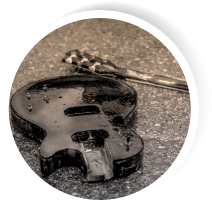

Why choose Ripe for music insurance?

Stand-alone Public Liability cover
Just need Public Liability cover for an upcoming gig or event? You can quickly purchase standalone cover and get proof sent straight to your phone.

Backed by the Ripe Guarantee
Insurance that takes good care of you with great cover, exceptional service at the right price.

Equipment cover up to £50,000
Our equipment cover protects you in case your instrument/music equipment is lost, damaged or stolen including from a vehicle or venue.





















